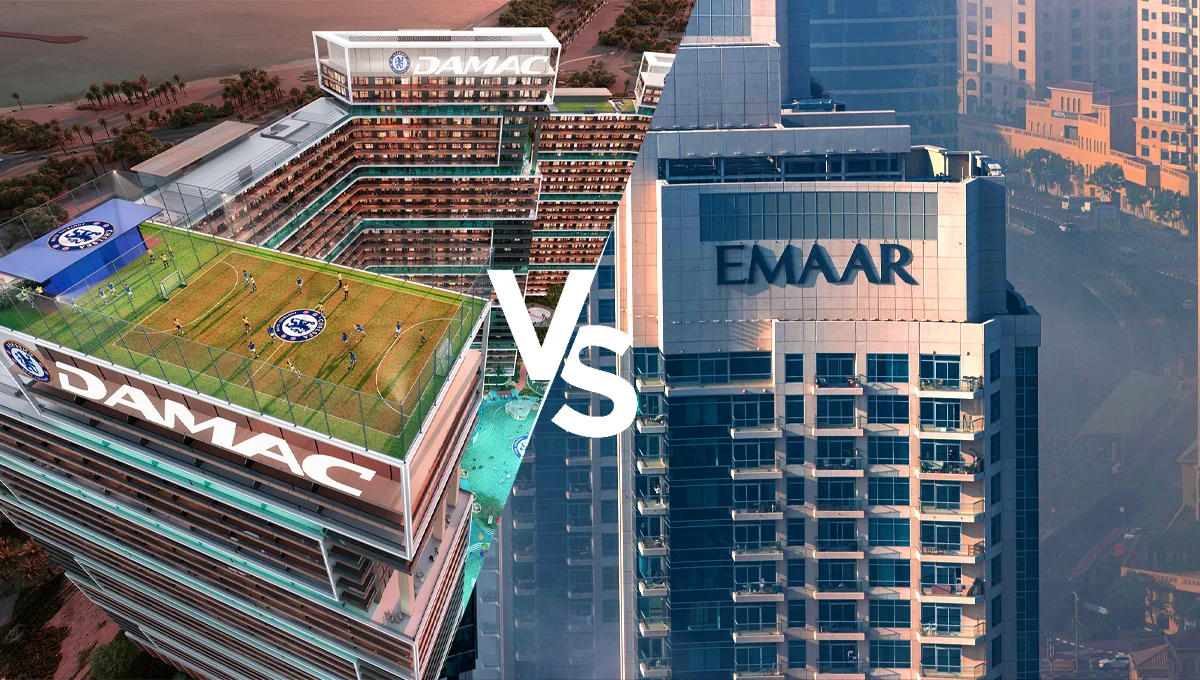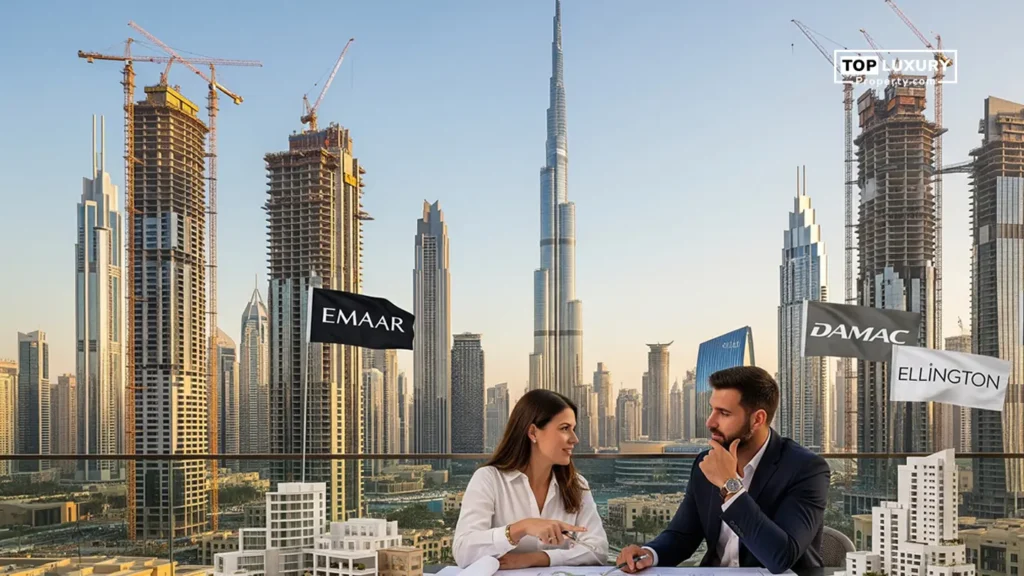
Dubai’s real estate market stands as one of the most dynamic and investor-friendly in the world. Among the many property developers shaping its skyline, two names dominate every conversation—Emaar vs DAMAC Both are globally recognized brands, celebrated for their architectural excellence, premium offerings, and investor appeal.
However, when it comes to Return on Investment (ROI), the debate intensifies. Investors often find themselves wondering — which developer delivers better returns? Let’s dive deep into the details and find out which one takes the lead.
Before comparing Emaar and DAMAC, it’s important to understand what ROI means in real estate terms. ROI, or Return on Investment, represents the profit generated from a property compared to its purchase cost. In Dubai, ROI typically ranges between 5% and 9%, depending on factors like property type, location, and developer reputation.
A higher ROI signifies that your property generates better rental income or capital appreciation, making it a key metric for investors evaluating long-term profitability.
Emaar Properties, established in 1997, is the developer behind some of Dubai’s most iconic landmarks—Burj Khalifa, Dubai Mall, and Downtown Dubai. The brand’s reputation for delivering high-quality projects on time makes it a preferred choice for both investors and residents.
Emaar’s developments are often located in prime areas that promise high demand and consistent rental yields. Communities like Dubai Hills Estate, Downtown Dubai, and Dubai Creek Harbour are known for their stable occupancy rates and premium lifestyle amenities.
The brand’s commitment to excellence and attention to detail ensure that its properties maintain long-term value, offering investors both capital appreciation and steady rental returns.
Emaar’s projects typically offer ROI in the range of 5% to 7%, depending on the community and property type. For instance:
While Emaar properties might require a higher initial investment, they deliver long-term capital growth, ensuring a stable portfolio for investors seeking reliability over speculation.

Founded in 2002, DAMAC Properties has built its reputation around luxury and innovation. Known for its bold designs and collaborations with global brands like Versace, de GRISOGONO, and Cavalli, DAMAC appeals to investors looking for modern luxury and high rental potential.
DAMAC’s developments often feature striking architecture, branded interiors, and vibrant community lifestyles, attracting both local and international tenants. Unlike Emaar, DAMAC offers properties in diverse pricing brackets, making it accessible for mid-range investors as well.
Many of DAMAC’s properties are strategically located in Business Bay, DAMAC Hills, DAMAC Lagoons, and Dubai Marina, which have seen consistent rental demand and appreciation in recent years.
DAMAC projects generally offer ROI between 6% and 9%, outperforming Emaar in certain mid-tier segments. For example:
DAMAC’s aggressive pricing strategies and flexible payment plans also make it easier for investors to enter the market, allowing faster profitability and liquidity.
Let’s look at how both developers perform across key ROI factors:
| Criteria | Emaar Properties | DAMAC Properties |
|---|---|---|
| Average ROI | 5% – 7% | 6% – 9% |
| Property Quality | Premium finishes, consistent delivery | Luxury with creative branding |
| Locations | Prime areas (Downtown, Dubai Hills, Creek Harbour) | Expanding zones (Business Bay, DAMAC Hills, Marina) |
| Price Range | Higher entry cost | More affordable entry options |
| Rental Demand | Steady and long-term | Strong in mid and short-term rentals |
| Capital Appreciation | High and stable | Moderate to high depending on project |
| Investment Risk | Low | Moderate |
| Best For | Long-term investors | ROI-driven short-term investors |
From this comparison, Emaar clearly leads in long-term value and brand security, while DAMAC dominates in higher rental yields and accessible investment entry points.
Emaar’s projects are often seen as “blue-chip” assets—properties that hold value and appreciate steadily over time. The brand’s reputation ensures minimal risk, making it ideal for foreign investors who want security and peace of mind.
Moreover, Emaar’s communities are well-planned, offering everything from schools to hospitals, which increases their tenant retention rate.
Emaar investors often benefit from:
In essence, Emaar is perfect for investors who prefer long-term stability over quick gains.
DAMAC, on the other hand, has built its brand on high returns and affordability. The company offers a wide variety of properties across budget ranges, often located in developing zones where ROI potential is significant.
DAMAC properties attract investors who want to capitalize on Dubai’s growing rental market, especially through short-term rentals via platforms like Airbnb.
DAMAC investors often benefit from:
For those seeking fast-turnaround returns or portfolio diversification, DAMAC is the go-to choice.

Several market trends influence ROI performance across both Emaar and DAMAC projects:
While both Emaar and DAMAC are positioned strongly in Dubai’s market, their ROI potential caters to different investor mindsets.
In the next five years, as Dubai continues to expand and attract global talent, both developers are expected to deliver solid returns—but DAMAC may offer slightly higher average yields, while Emaar ensures safer, more predictable growth.
Smart investors often don’t choose one over the other—they diversify. A balanced portfolio with Emaar’s stable properties and DAMAC’s high-yield assets can offer the best of both worlds: stability and profitability.
For example, an investor might purchase an Emaar villa in Dubai Hills Estate for long-term appreciation while also investing in a DAMAC apartment in Business Bay for immediate rental returns. This balanced strategy hedges risk while maximizing ROI potential.
When comparing Emaar vs DAMAC, there’s no absolute winner—it depends on your investment goals.
Both developers have proven their excellence and reliability in the Dubai real estate market. The key lies in understanding your risk appetite and aligning your investments accordingly.
Whether you prefer the timeless prestige of Emaar or the bold innovation of DAMAC, Dubai’s market ensures one thing—the potential for strong returns and long-term wealth creation.
Do Follow Estate Magazine on Instagram
Waterfront Living: Palm Jumeirah vs Marina – Which is Truly Worth It?
